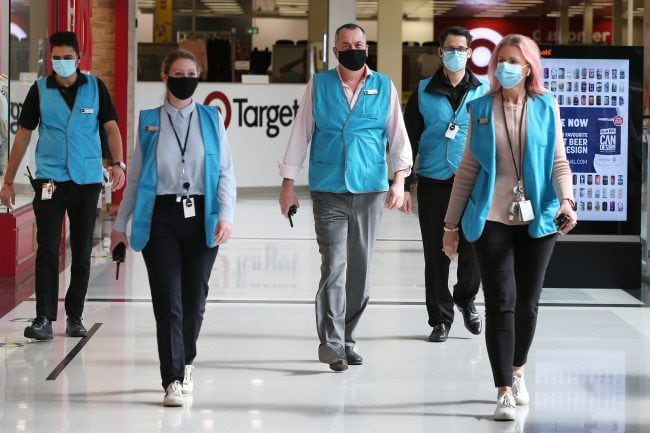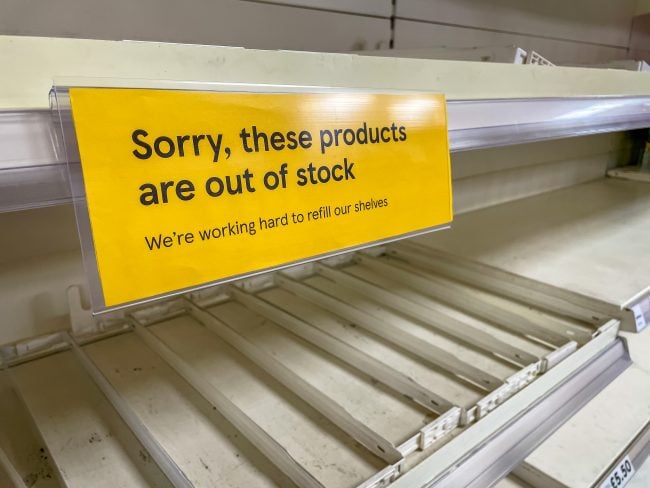
Retailers bolstered online offerings, scrambled to retain staff and re-thought established supply chain practices as COVID altered the landscape.
Monash Business School’s Australian Consumer and Retail Studies spoke directly to leading retailers about how the Australian retail sector endured a turbulent time both during and directly following the COVID-19 pandemic.
The retail industry has shown its resilience with a 19.2 per cent boost in yearly growth from August 2021 to 2022, according to the ABS Retail Trade report.
However, the pandemic has fairly radically changed the way retailers approach their customers, their staff and even basic business practices.
Investing in the digital shopfront
The digital shopfront can be the first interaction a customer has with a retailer and it is imperative that it provides an experience reflective of the brand in the physical space.
During COVID, with physical stores frequently closed, online channels became critical for retailers, with the visual merchandising employed in physical stores moving to digital platforms.
Retailers invested particularly heavily in Instagram, with high-quality curated imagery and messages to drive traffic to retail store websites or other avenues where customers could purchase their products, to offer an aesthetic and seamless online experience for consumers.
A homeware retailer explained: “The look is really, really important… what it looks like when you’re selling it online is more important than how it actually functions. How it functions impacts whether people come back to you, but how it looks is more important to get the initial sale… So that is front-of-mind for me, when I’m looking at new products, it has to be the right look. It has to be appealing and be able to be photographed well.”
Consumers have become more comfortable with shopping online – 50 per cent of shoppers indicating that they will continue to mainly shop online for non-grocery products, as shown in ACRS Retail Adaptation report.
‘They’re not coming back’: Caught out by the Great Resignation
The so-called ‘Great Resignation’ has spread through the media like wildfire over the past year, as workers appeared to quit their jobs en-masse.
Data such as the ABS Job Vacancies certainly reflected a high degree of retail staff turnover, with a whopping 144.2 per cent increase in reported job vacancies from pre-COVID period of February 2020 to August 2022.

To keep employees post-COVID retailers are now offering flexible work arrangements and other initiatives.
It appeared many retailers were caught out by this apparent trend, expecting that due to uncertainty, employees would be seeking more job security within current organisations.
A food and beverage (F&B) retailer reflected: “Our biggest challenge at the moment, you’ve probably heard from other F&B guys, there’s a quantum shift of the workforce who have left the sector, and they’re not coming back.”
In response, retailers offered what they could to keep employees on their books through flexible work arrangements, redeployments, up-skilling opportunities and well-being initiatives.
Retailers also increased online communication and engagement with employees to ensure support was made readily available.
For example, an insurance retailer explained that their “executive team also started sending out weekly videos. So, with people working from home, keeping them updated (was a priority), checking in, making sure they were okay”.
Staff care has become increasingly important throughout the pandemic as retailers acknowledge the importance of the staff who manage and operate their stores and services.
Although organisations are increasingly incorporating employee well-being initiatives, there is still improvement needed in this space.
A report commissioned by the Australian College of Applied Professions found that 53 per cent of Australian workers would hide a physical or mental health condition to avoid being judged or discriminated at work.
Rethinking the just-in-time supply chain
The pandemic and other global crises continue to cause significant disruptions to supply chains, which has affected retailers’ ability to stock their stores, as well as deliver products to customers.
This has led retailers to rethink their ‘just-in-time’ supply chains as recent crises have highlighted the vulnerability of low-volume inventory and the reliance on imports.
Stock shortages have been a consistent theme among grocery retailers as demand fluctuates due to shipment delays and staff shortages.
Earlier this year, grocery giants Woolworths and Coles predicted long-term supply issues for a range of produce and canned food that are already impacting the hip pockets of Australian consumers.
Some products are even being taken off Australian shelves – such as the much-loved Starbust lollies – as rising costs have heavily impacted supply chains.

Grocerr retailers have experienced stock shortages due to shipment delays and staff shortages.
Non-grocery retailers have also shown concern for stock levels as store closures during lockdowns left some with an abundance of old stock that cannot be sold until the next season.
“We’re all going to be stuck with winter stock, you can’t sell women’s fashion boots in October, just forget about that, that’s just not going to happen,” a clothing retailer lamented. “So the flow-on effect will be that the supply will get much smaller next winter.”
Delivery delays have also left customers disgruntled with their online purchases, with Australia Post continuing to warn about domestic and international delivery delays.
Some retailers have opted for smaller courier services to fulfil orders, although this still requires constant observation.
A homeware retailer recounts, “Getting the products out to customers… this is also really unreliable at the moment… One courier company I’ll use for a little while and they’ll be quite reliable then they’ll drop the ball and I’ll change to another courier company… then it affects my customers’ feedback.”
For Australian retailers, supply chinas will continue to be a challenge with extreme weather condition across the country
Taking time to take stock
While the pandemic and other local and global crises have presented ongoing challenges for retailers, many have reported it has also been an opportunity to reflect and assess areas for improvement to optimise operations and processes.
A cosmetic retailer said: “We’ve used the last 12-18 months to really assess the viability of our store network and keep the ones that we really want to keep and let ones go that weren’t so profitable or were in the wrong spot [location].”
This is echoed by a food and beverage retailer: “We’re above store level… It actually gave us a really cool opportunity, last year, to stick our nose straight back into the business… We were actually able to pull apart our productivity expectations a bit more and we were able to reset a lot of our business model.”
Making time to reflect and review plans and processes has helped retailers to adapt to the ever-changing retail landscape.
Retailers are continuing to show an admirable level of resilience.
These interviews have highlighted retailers’ readiness to evolve through innovation and collaboration even in the most difficult of circumstances.


